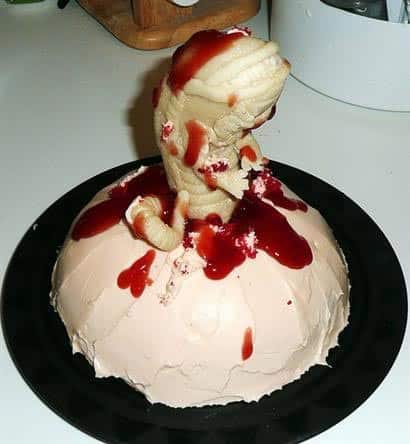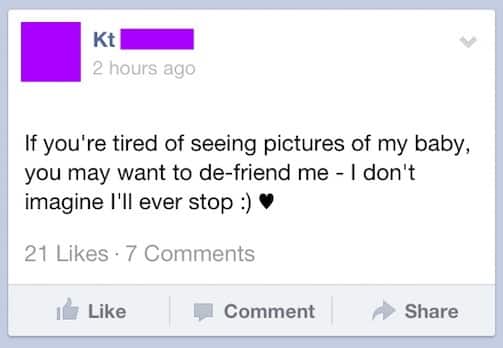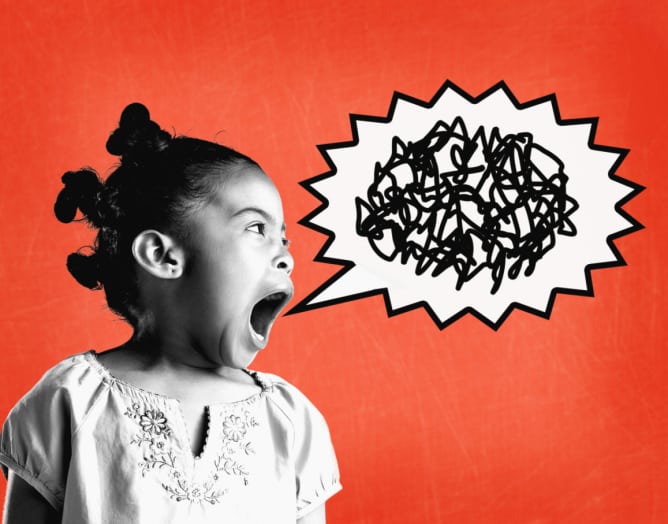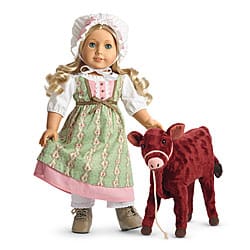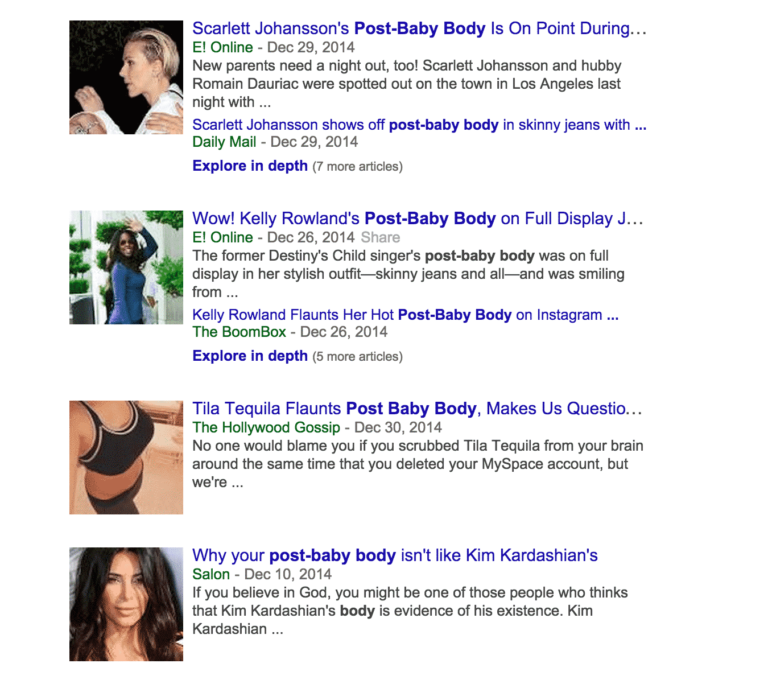Cloth Diapering Isn’t The Poop-Filled Disaster You Think It Is
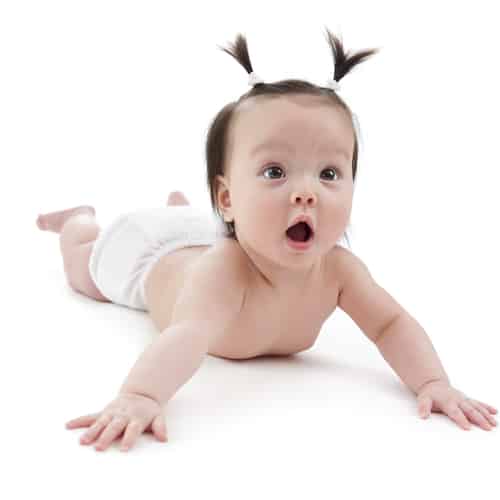 I was six months pregnant with my first child when I casually mentioned to my manager that we were thinking about using cloth diapers. His response? He laughed in my face. Then he told me that he knew several people who had tried cloth diapers, and they all quit within a few weeks, having spent ”so much money” on the supplies. Little did he know that would only make me more determined to try I’m far, far too stubborn to let a challenge like that go by.
I was six months pregnant with my first child when I casually mentioned to my manager that we were thinking about using cloth diapers. His response? He laughed in my face. Then he told me that he knew several people who had tried cloth diapers, and they all quit within a few weeks, having spent ”so much money” on the supplies. Little did he know that would only make me more determined to try I’m far, far too stubborn to let a challenge like that go by.
So it wasn’t long after that I found myself in a local store that specialized in cloth diaper supplies, looking apprehensively at piles and piles of things that I did not remotely understand. I am awfully glad that the owner of the store knew her stuff, because it was seriously intimidating. Without her help, I probably would have walked out which would have been a shame, because what I discovered once I got the hang of things was that I really loved cloth diapering.
The first reaction most people have when I tell them is ”EEEWWWW!!” But that’s usually followed by curiosity. What is it like having diapers that you wash and reuse instead of throwing them away? While I freely admit that cloth diapering isn’t for everyone, the truth is that poop is, well, poop; and while cloth diapering does occasionally become a messy, stinky, goopy disaster, that’s also a pretty good description of life with any baby.
The first thing I discovered was that cloth diapers today are a totally different animal from the ones my mother used, which featured yards of cloth, rubber pants, and wicked-looking diaper pins. Cloth diapers now range from prefolded inserts, already sewn together for easy use, to high-tech pocket diapers that look like a slightly plush disposable, but with cuter patterns. Prefold diapers are the cheapest, while high-end pocket diapers are expensive, but much more accessible to people who are new to cloth diapering. However, you need a lot of them: I used prefolds and covers, so I started with thirty of the seven-to-fifteen pound size and six diaper covers. The biggest difference financially is that whatever you spend on cloth diapers, you have to lay out all at once (or at least in large chunks), but the total is generally pretty good, especially when you factor it over using them on multiple kids. In the end, I spent a total of about $750 on all the cloth diapering supplies I bought for both my kids.
Of course, all of this was the theory: once you’ve got your supplies on hand, it’s time to use them on an actual baby. I gave myself a few weeks of newborn-induced haze before I started using cloth. The first time I put a prefold on my son, it was a gong show cloth flying everywhere as I struggled to get the clip on properly and the cover, well, covering. Then it was time for some hysterical laughter as I realized just how huge a three-week-old baby’s butt looks when it’s in a prefold diaper.
There’s a bit of a learning curve with cloth. It takes a while for diaper changes to get easy, especially if you’re holding a cloth prefold together and trying to clip it as your baby struggles, and it takes a while before you get good at timing the laundry so that you never run out of clean ones. You have to make sure the edges of the prefold are tucked under the waterproof cover, or you’ve just created a very handy wick to get your kid’s sleeper soaking wet. It can also be startling the first time your baby wets in a cloth diaper both of my kids screamed bloody murder the first few times, because they felt so much wetter than they did in disposables.
However, I noticed one benefit immediately: no more blow-outs. Cloth diaper covers fit pretty snugly around the legs and the waist, unlike disposables, which always seemed to gape a bit at the back on my kids. I have had more blow-outs than I care to remember when my kids were wearing disposables; blow-outs in cloth I can count on one hand for both of them.
Yes, my kids still used disposables plenty. Many people assume that cloth-diapering is an all-or-nothing choice, but most cloth diapering families I know mix in disposables some of the time. Sitters and daycares often won’t take kids in cloth diapers, so that’s one common reason to switch back and forth. So is travel it only took one attempt visiting my parents, four hours’ drive away, and lugging a giant duffel bag of diaper supplies for me to decide that was royally stupid and get disposables for overnight trips. And the day I realized that my son was waking up at night ONLY because he felt wet in his cloth diaper was the day I switched to disposables at night forever.
Dealing with the laundry is probably the biggest source of disgusted curiosity, but the truth is that it’s not so bad. At the newborn stage, especially for a breastfed baby, the poop is pretty innocuous, although some families do rinse newborn diapers. More importantly, using a ”wet pail” keeping a pail of water to soak soiled cloth diapers in until laundry day isn’t really necessary; most modern washing machines can handle them dry, eliminating one of the grossest aspects of using cloth diapers in the past. You do want to do a heavy-duty wash in fairly hot water, and a sanitize setting on the drier is handy, but not necessary. There were no diaper services in my area, so out-sourcing the cleanup wasn’t an option for me (and in any case, a diaper service would have eliminated any savings from using cloth), but I never found the laundry particularly difficult to add to my routine.
Once the kid starts solid foods, things get a little nastier but then, they do in disposables too. Since I was on a septic system, I couldn’t use the convenient flushable liners that would have let me just peel and flush everything; instead, I had to shake the diapers out into the toilet. Not my favourite part of parenting, but not the most disgusting thing I dealt with on an average day.
Over time, I noticed other benefits to cloth too. Both of my kids acted uncomfortable as soon as the diaper was wet, so I never missed changing a wet diaper the way I sometimes did when they were in disposables. And when they started toddling, it took a little extra work with all the bulk around their waist and legs, but the extra padding meant a lot fewer tears when they landed on their butts. For ages after they were out of diapers, they both looked shocked to discover that falling down hurt!
There are other benefits some people report to cloth diapering, but I didn’t notice those as much. People say your kids won’t get diaper rashes; my kids got less, but I’d be surprised if most babies get out of any kind of diaper without at least a few. (You also need to keep in mind that you can’t use the majority of diaper creams when cloth diapering.) The woman at the store also made a big deal about cloth diapered babies toilet training about six months earlier than disposable diapered kids; my kids obviously didn’t get the memo on that one.
My major motivation for trying cloth diapering (aside from cost and stubbornness) was environmental: I knew diapers took forever to decompose, and I wanted to minimize the amount I contributed to landfills in our area. The real environmental picture is hard to decipher there are those who argue the environmental impact of growing the material and the energy use associated with washing cancels out the benefits but it certainly reduced the number of diapers I threw away. I will say that, without a diaper service, the cost savings really added up; I could see a big difference in our expenses in a month where we used more disposables.
Cloth diapering exclusively isn’t for everyone. When soon-to-be parents ask me about it, the first thing I say is that, if you’re not using a diaper service, you HAVE to have accessible laundry. I’d even be hesitant if the laundry was in the basement of an apartment building instead of in your unit, just because every extra load means more trips up and down with baby in tow. And there are plenty of parents who just don’t want to deal with laundry on a schedule because it’s no big deal if you run out of onesies, but if you run out of diapers, you’ve got an issue.
But that said, there are lots of ways families can incorporate cloth diapering into their lives part-time. If you love to swim with your baby, for the price of one pack of disposable swim diapers, you can get a washable swim diaper or a waterproof diaper cover that you’ll be able to use for at least six to twelve months, possibly even longer. I’ve known parents who cloth diaper only on weekends, or use cloth at home and disposables when they’re out of the house. It doesn’t take much use to see a big difference in your diaper budget, and even if you don’t use cloth exclusively, every diaper you’re not throwing out reduces the amount of waste in the garbage can.
So if cloth diapering is something you’re curious about, I urge you to give it a try. Yes, there will definitely be moments where you want to gag and think, ”This is the grossest thing in the world!” But I guarantee you, you’ll have the same thought using disposables. You’ll like knowing that you’ve kept a few diapers out of the mountains in the landfill, and who knows? Maybe your baby will actually toilet train sooner, and you’ll be done with diapers a little bit earlier.
Best of all, that money you save buys a whole lot of Mom and Dad’s beverage of choice when it’s been one of those days.
(Image: Michael Pettigrew/shutterstock)

